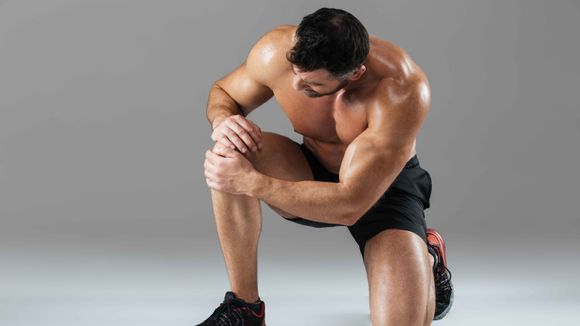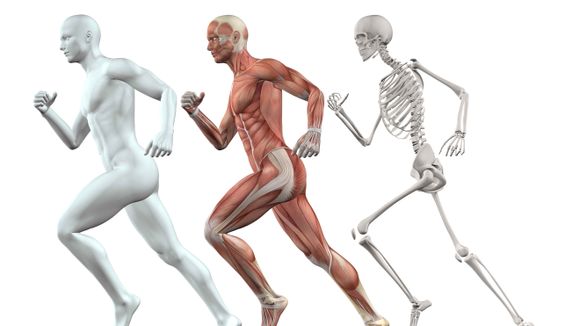How to Keep Your Joints Healthy
Be on the move at every opportunity.
This is the golden rule for joint health: the more you move, the less stiffness in your joints you will have. Whether you're reading, working, or watching TV, change positions frequently. Take breaks from the desk where you work or always go out if you have a walk.
Don't stretch before exercising.
Contrary to popular belief, it's not good for your muscles and joints to stretch when they're cold. Instead, we recommend stretching every day or at least three times a week, but immediately after exercising. Before exercising, start with a light warm-up, such as walking for 10 minutes, warming up all joints with rotating movements, squats with own weight or using an exercise bike or crosstrainer.
Build muscle to support your joints
Strong muscles provide your joints with better support and stability. This is especially important for people with weakened bones due to osteoporosis. Even a little more strength in the body will always be useful for carrying children, grandchildren, purchases or large items. If you have problems with your joints, it's best to avoid fast, repetitive movements. Slow and concentrated is the better option.
Improve your flexibility
If your joints are stiff and not very flexible, it is important to increase the range of motion. The more flexible you are, the better your balance and overall joint health, and the less likely you are to suffer from a fall or slip, as winter weather most often does.
For more flexibility, massages, kinesitherapy, yoga, pilates and other activities will help, some of which you can practice at home in your pajamas.
Keep your bones and muscles in shape
For healthy bones, it's vital to get enough calcium and vitamin D every day. Dairy products are the best sources of calcium, but other good sources are green leafy vegetables such as broccoli and cabbage. If you think you're not getting enough calcium from your diet, consider taking supplements. In winter, many people are also deficient in vitamin D due to the lower solstice, so it should also be provided extra through diet or supplements. [ref. 1]
In addition, your muscles need protein. Exactly how much you need depends on your age, gender, and how active you are. Good sources include various types of animal meat, seafood, beans, legumes, soy products and nuts. [ref. 2]
Pay attention to your posture
To protect your joints throughout the body, always stand and sit upright, trying to observe the position of the spine. When walking, make sure your shoulders are back and your spine is straight. If you work at a desk, take a break every hour to stretch and adjust your posture. Swimming is also a good way to keep your posture correct. In this regard, shoes are also very important, so if you have a problem with the feet, look for orthopedic shoes. 3
Develop a strong core
The strong muscles of your abdomen and back significantly improve your balance, making it less likely that you will fall or injure yourself. Concentrate on core strengthening exercises that work to train the muscles of the abdomen, back and thighs. Pilates and yoga are great activities to strengthen the core, and in terms of strength exercises with weights - any kind of rowing, sit-ups, pull-ups and more.

Maintain a healthy weight
The amount of weight your skeleton has to carry each day directly affects the health of your hips, knees and back. If you are overweight, it is important to lose weight, and the reasons for this should be clear. Even a small weight loss can help your joints. Did you know, for example, that every pound you lose takes 1.8 pounds of tension out of your knees? [Ref. 3]
Treat joint injuries immediately
A joint injury (to the shoulder, knee, ankle, wrist, neck, back) can quickly cause a loss of cartilage tissue in this joint, making the injury even more serious. If you have injured a joint, visit a medical center immediately for diagnosis and treatment. But just as important as treating the injury is taking steps to avoid more damage in the future. If the injury to your joint is serious enough, you may need to stop with certain activities that put too much strain on that joint, or apply other therapeutic measures. This is the judgment of specialists such as orthopedists, kinesis and physiotherapists, osteopaths and others.
Know the capabilities of your body.
It's normal to have muscle pain after exercise, which we commonly call "muscle soreness." But if it hurts for more than 48 hours, you may have overworked. Next time, do not strain so much, but reduce the duration, weight, repetitions and try again. Read more about the proper breathing technique and exercise, especially if you are new to sports activities.
Healthy joints are maintained with nutrition
Your habits, including those related to nutrition, have a big impact on the health and longevity of your joints. For example, choosing foods that are good for building bone density, strengthening connective tissue, and reducing inflammation can help you prevent injuries and save your joints for a long and active life.
Here are the most valuable foods in this regard to consume more often for healthy joints:
- Cold-water fish: tuna, salmon, trout and sardines are good sources of omega-3 fatty acids, which can reduce inflammation in the body; They also help improve brain function. reduce the risk of heart disease, diabetes and other diseases.
- Nuts and seeds: Omega-3s can be found in a variety of nuts and seeds — such as walnuts, almonds, flax seeds, chia seeds, and pine nuts — and can help reduce inflammation in joints and connective tissue.
- Vegetables: Vegetables such as arugula, kale, purple cabbage, broccoli, cauliflower, and Brussels sprouts block an enzyme that causes joint swelling.
- Blueberries: These sweet fruits are high in anthocyanins — potent flavonoids — which help "turn off" inflammatory reactions in the body.
- Apples: These fiber-rich and anti-inflammatory compounds also have additional benefits for gut health.
- Tomatoes: They contain the powerful antioxidant lycopene. A little known fact is that cooked tomatoes are richer in lycopene than raw ones.









